#Osu Kannon Temple
Explore tagged Tumblr posts
Text

Osu Kannon Temple in Nagoya, Japan
Japanese vintage postcard
#tarjeta#postkaart#sepia#osu kannon temple#temple#japan#carte postale#ansichtskarte#briefkaart#photo#photography#postal#postkarte#vintage#kannon#japanese#postcard#historic#nagoya#ephemera
9 notes
·
View notes
Text
Navigating Nagoya: Must-see sights in and around Japan's historic city
Nagoya, Japan’s fourth-largest city, often remains overshadowed by the glamour of Tokyo, the cultural richness of Kyoto, and the hustle and bustle of Osaka. Yet, Nagoya is definitely a hidden gem, a vibrant city waiting to be explored. Here, history mingles seamlessly with modernity, offering a unique travel experience which I discovered when I joined the international trip qualifiers of Sun…

View On WordPress
#NavigatingNagoya#Atsuta Shrine#comfortable footwear#Hori River#immersive travel#japan#Macaulay Club#Nabana No Sato#Nagoya#Nagoya attractions#Nagoya Castle#Nagoya clothing#Nagoya history#Nagoya modern architecture#Nagoya navigation#Nagoya travel#Nagoya weather#Osu Kannon Temple#practical travel tips#Shirakawa Park#Shirakawago Village#sun life philippines#sun talks digital media edition#Takayama Old Town#Tokugawaen Park#travel essentials
1 note
·
View note
Text
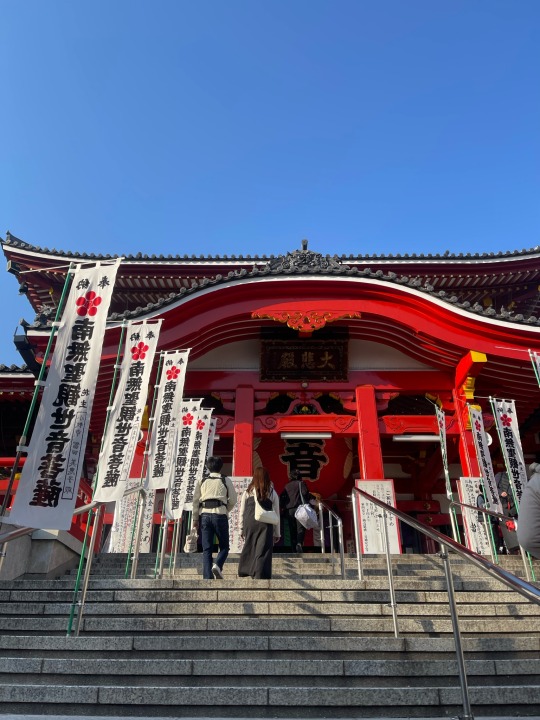
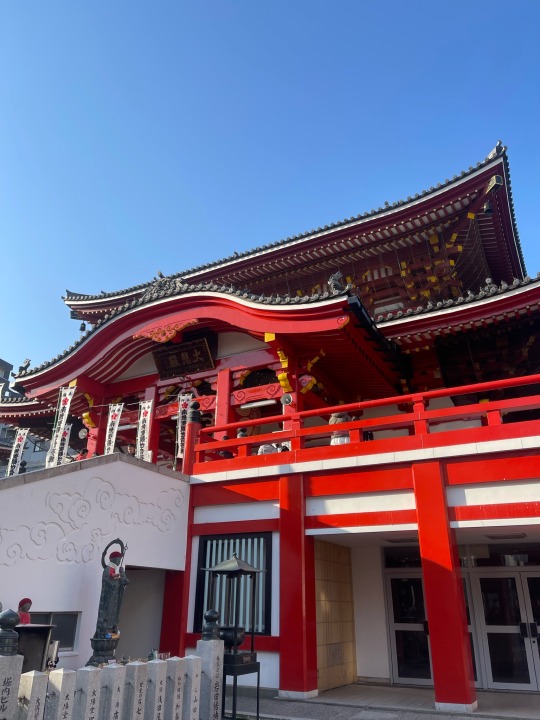
📍osu kannon temple in nagoya, japan
#japan#japanese langblr#japanese books#japanese kanji#japanese language#japan travel#japan trip#study abroad#learning japanese#japanese#student life#language learning
32 notes
·
View notes
Text
On this day, one year ago...
Today I started off heading to the Stardom popup shop. I'd changed so many of my travel plans just to have a chance to visit this store, because it was a Stardom store. However, it was a mistake 😂 All the merch was just as shit as the last time they did a Tower Records popup store 😭 I had an inkling it would be going in, but I went for it anyway. I'd committed. The Gee Store was way better in comparison 😂
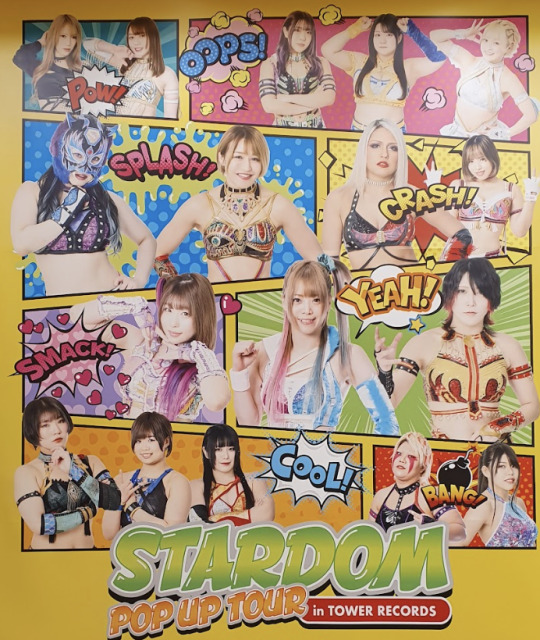
Anywhos! After that it was the start of my tour of Japan as a Stardom groupie 😂 The first show I was following them to was in Nagoya. I hopped on the Shinkansen and made my way there!
First off I hilariously went to the wrong hotel - the one next door to the one I'd booked, cos obviously I'd left my brain cells back on the train.
I honestly wasn't too enamoured with Nagoya when I was there. Perhaps I was in not the best district, or I was just tired and it was clouding my judgement, but it had a much seedier vibe than anywhere else I'd been. Not as clean too. Now, we're talking seedy and unclean by Japan standards - it was still far nicer to be in than most places in London 😂 But some of the establishments, especially walking around at night, yeah it defo didn't have the same vibe. But it was still good to see other cities in Japan outside of the tourist loop.
Wanting to see the sites, I first travelled to Osu Kannon, a Buddhist temple. It was a really nice place.
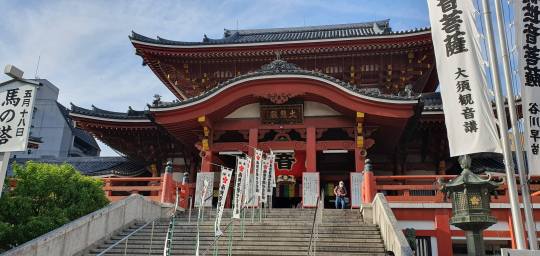
However, these two drunk foreigners snuck up on me and grabbed me by the back of the neck... like, what the fuck? This was in the afternoon, on temple grounds... have some respect. Not to mention, naturally I was kinda freaked out. They tried to talk to me, but I was civil and made my excuses as soon as I could. Kinda shook me up. :/
I went to Osu Shopping Street afterwards, and dag nammit if that place didn't have my EXACT fashion sense for sale, but my suitcase was too full for me to buy any of it 😭
Since I was so disappointed by the Stardom store in Tokyo that morning, I walked up to the Nagoya branch of Gee Store. Again, they had so much. Steins Gate, Black Lagoon... even this niche lil anime my friend was obsessed with at the time. And of course, Stardom merch. They didn't have what I wanted in my size, unfortunately, but at least I got to have a peruse :)
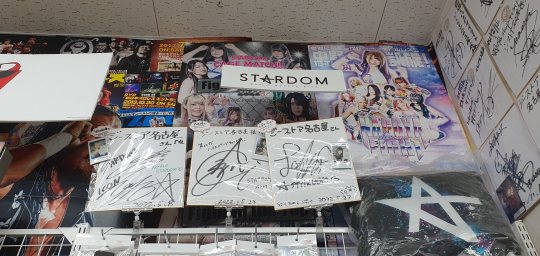
I tried to get to Nagoya Castle, see if there was a way to get some photos without visiting the castle grounds as I know it'd be tight time-wise the next day to visit before the Stardom show. Unfortunately I couldn't see it well, but I did see a guy feeding some cute stray cats :)

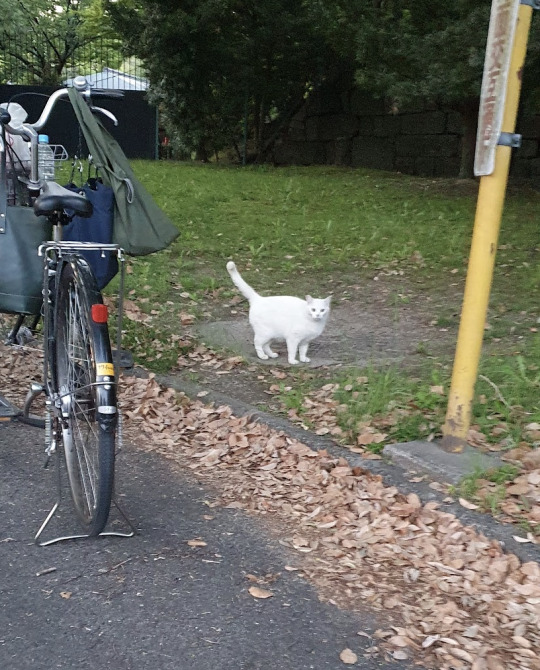
I struggled to find places to eat at night. From memory, there was an Italian place I tried that was too full, then a yakiniku place which was literally empty at peak times (which is kinda concerning). Eventually I found this little french place. I had this thinly sliced cold salmon. I thought it was cooked and cold, but turns out it was raw... I was trying to avoid eating raw fish, cos I heard it can upset your stomach if you're not used to it, and Sod's Law I was worried I'd end up feeling unwell again, like I did at the start of the holiday. Thankfully, I was fine, and it was actually really tasty.
Took some nice night time photos too :)
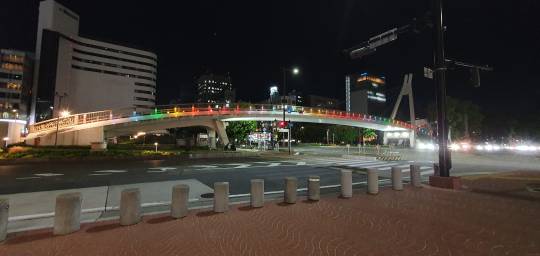
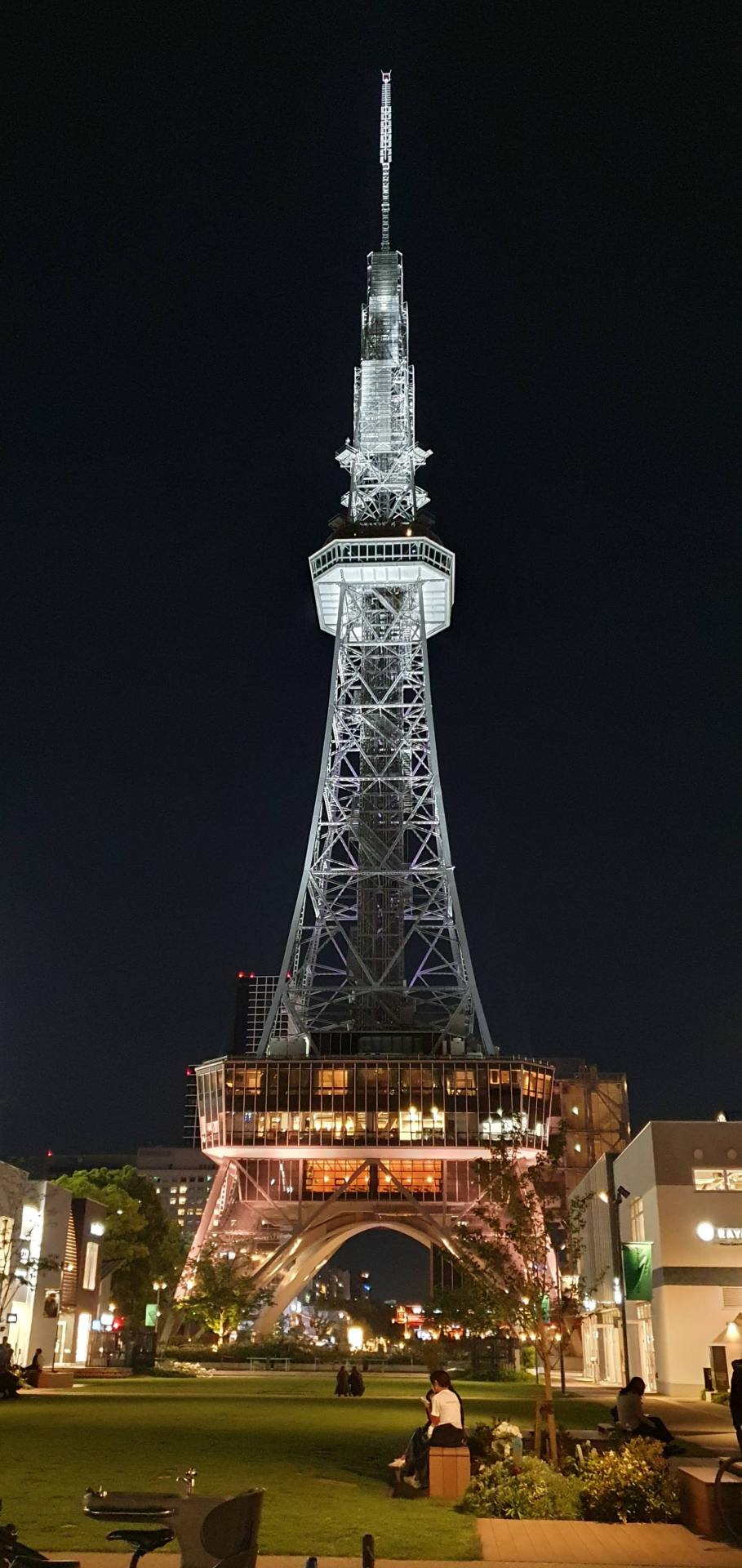
2023/04/28
0 notes
Text
Du lịch Nhật bản tết âm lịch
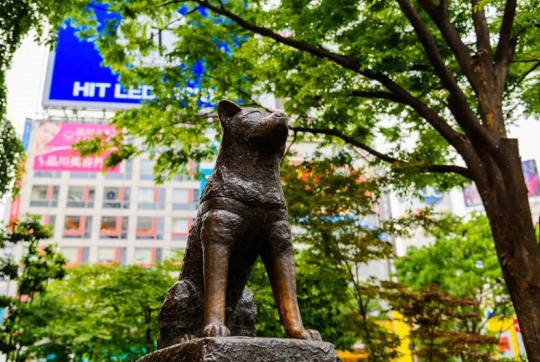
Du lịch Nhật Bản trong dịp Tết Âm lịch là một trải nghiệm đặc biệt, và chương trình 6 ngày 5 đêm từ Hà Nội, với lộ trình KYO-FUJI-NAGOYA-KYOTO-OSAKA, hứa hẹn mang lại những trải nghiệm đáng nhớ và phong phú cho du khách.
Hành trình bắt đầu từ Kyoto, thủ đô văn hóa truyền thống của Nhật Bản. Với hàng trăm đền chùa cổ kính, những con đường lối hẹp, và những khu vườn hoa anh đào thơ mộng, Kyoto là nơi tôn vinh sự đẹp đẽ và tâm linh. Du khách có cơ hội thăm viếng các địa điểm nổi tiếng như Kinkaku-ji (Chùa Vàng), Gion District, và Fushimi Inari Shrine với hàng nghìn cổng Torii đỏ đậm.
Tiếp theo là khu vực núi lửa Fuji, một biểu tượng văn hóa và thiên nhiên của Nhật Bản. Với đỉnh núi cao chót vót và hồ lớn bao quanh, ngọn núi này không chỉ thu hút các nhà leo núi mà còn là địa điểm lý tưởng cho các hoạt động giải trí ngoài trời như leo núi, đi bộ và thám hiểm hang động.
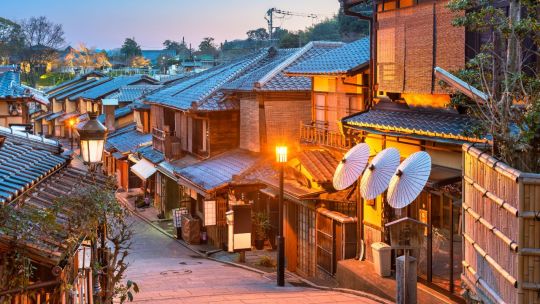
Nagoya, thành phố lớn thứ ba của Nhật Bản, là điểm dừng chân tiếp theo trên hành trình. Với sự kết hợp giữa văn hóa truyền thống và hiện đại, Nagoya thu hút du khách bằng các công trình kiến trúc độc đáo như Nagoya Castle, Osu Kannon Temple và Atsuta Shrine. Du khách cũng có thể tham quan các bảo tàng và công viên giải trí ở đây.
Sau đó, là chuyến đi đến Kyoto, nơi du khách có thể tham quan những khu vườn hoa anh đào đẹp nhất vào mùa xuân, đặc biệt là Kiyomizu-dera và Arashiyama. Ngoài ra, du khách cũng có thể thưởng thức ẩm thực truyền thống và tham gia các hoạt động văn hóa như cắm hoa ikebana và học cách trà truyền thống.
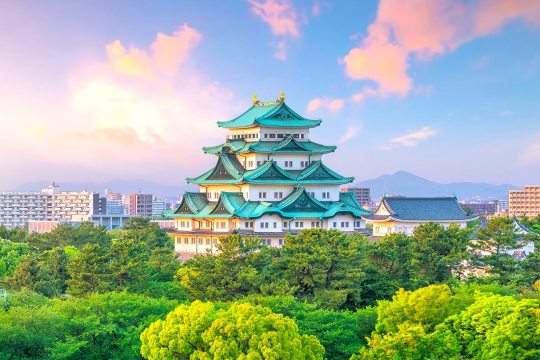
Cuối cùng, là thành phố sôi động và hiện đại Osaka. Nơi đây nổi tiếng với các khu mua sắm và ẩm thực đa dạng, đặc biệt là khu phố Dotonbori với những cửa hàng, nhà hàng và kỳ quan ánh sáng lung linh vào buổi tối. Du khách cũng không thể bỏ qua việc thăm Universal Studios Japan để trải nghiệm các trò chơi và cùng nhau tận hưởng niềm vui của kỳ nghỉ.
Với lịch trình đa dạng và phong phú như vậy, chương trình du lịch Nhật Bản trong dịp Tết Âm lịch chắc chắn sẽ là một hành trình đáng nhớ và thú vị đối với bất kỳ ai muốn khám phá vẻ đẹp và văn hóa độc đáo của đất nước này.
0 notes
Text

Osu Kannon Temple//Nagoya
1 note
·
View note
Photo

#autel#altar#shrine#temple#osu kannon#new year#presents#offrande#offering#japan#japon#japanese#nagoya#asia#religious#voyage#travel#photography#life
2 notes
·
View notes
Video
大須観音の鳩たち by Yuri Yorozuna
#名古屋#Nagoya#大須#Osu#Oosu#愛知県#愛知#Aichi#Japan#東海地方#PENTAX Super-Takumar 28mm F3.5#中区#名古屋市#名古屋市中区#大須観音#Osu-Kannon#Oosu-Kannon#寺#寺院#temple#観音霊場#日本三大観音#北野山真福寺宝生院#宝生院#真福寺#鳩#土鳩#ドバト#ハト#カワラバト
1 note
·
View note
Photo

https://ift.tt/2YE0PSb
0 notes
Note
Do you know the general vibe of each of their cities? Like ive read that shibuya is basically like tokyo in that its urban and a bustling city with a lot of fashion and busy people.
I’ve never lived in or even visited Japan personally, so this is all second-hand knowledge or derived from pop culture and thus should be taken with a saltshaker’s worth of grains of salt.
Ikebukuro - Ikebukuro is a district within the ward of Toshima, Tokyo. (Think of wards as sub-cities within the metropolis of Tokyo itself.) It is a central commuter hub for Tokyo at large due to its presence on several major train and subway lines. Like Toshima as a whole, Ikebukuro is known for its strong international presence, especially in its Chinatown. Ikebukuro is generally known for its entertainment and commercial enterprises. Some of its best known features include the West Gate Park, an outdoor area for gathering and for practicing street dance, Sunshine 60, a huge shopping mall and shopping district containing various amenities, and Otome Road, one of the multiple pockets in Ikebukuro of otaku-geared shopping with an emphasis on catering to female consumers.
Yokohama - Yokohama is one of Japan’s most major port cities with a heavy emphasis on industrial processing, especially near the harbor itself. This gives the city a more “rugged” aesthetic than many other Japanese cities, but Yokohama is no stranger to the commercial and entertainment districts characteristic of large Japanese cities. One famous shopping mall, the Red Brick Warehouse, even capitalizes off of Yokohama’s industrial theme for its decor. Other prominent shopping areas include the downtown district Minato Mirai and Yokohama’s prominent Chinatown. Some famous landmarks include the enormous Ferris wheel the Cosmo Clock and the Yokohama Landmark Tower. Yakuza tend to appear pretty frequently in stories set in Yokohama, but I have no idea if this is reflective of any prominent yakuza presence in Yokohama or if it’s more in line with the city’s “tough guy” image.
Shibuya - Shibuya is a ward of Tokyo itself known for its large commercial presence, especially within the fashion industry. Some districts within Shibuya are especially well known for this, such as Harajuku and Omotesandou. The general atmosphere of Shibuya tends to cater to the young with large pop culture presences and an active nightlife. Not surprisingly for a city inhabited by many young people, Shibuya tends to lead socially liberal movements, such as allowing civil partnerships (with reduced rights) for same-sex couples and hosting a BLM protest earlier this June.
For whatever reason, there’s a slight trend in media to represent characters representing Shibuya as devious little twinks, and I have to wonder what about Shibuya is causing this. Perhaps the ghastly rents...?
Shinjuku - Shinjuku is a ward of Tokyo sandwiched between Toshima (where Ikebukuro is) and Shibuya. It is best known for its commercial power, large entertainment district, and collection of government administrative buildings. In terms of its commercial strength, Shinjuku is home to head offices for many corporations, including multiple large names in the publishing and electronics industries. Shinjuku has a colorful nightlife which has earned it the title of “the city that doesn’t sleep” and a large redlight district. It is also home to Shinjuku Nichoume, a neighborhood known as the hub of Tokyo LGBT subculture featuring the largest amount of gay bars in the world. The Tokyo Metropolitan Government, which governs every ward as a whole, is based in Shinjuku.
Despite also being ridiculously expensive, shoutout to Shinjuku for having consistently lower prices on apartments for rent. The general perception of Shinjuku as far as I’m aware of it is “Shibuya if Shibuya were a person now about ten years older who works in an office but still lets their hair down on the weekends.”
Osaka - Osaka is another major city and a huge economic hub for Japan. It houses all sorts of commercial and financial offices, including head offices for all of Japan’s major newspapers. Osaka is also very well known for its manzai comedians, so much that it has become a stereotype. The image perpetuated by pop culture of the average Osakan is one obsessed with making money, usually in a hurry, and typically more outspoken than the average Japanese citizen. Osaka is also characterized by its unique dialect. Osaka-ben is a type of Kansai-ben (western Japanese dialect, as opposed to the standard Eastern Japanese Kantou-ben dialects) that is comparatively easy to understand for non-Osakans, so it tends to appear in media a lot. Prominent city landmarks include Tsuutenkaku Tower and the Namba Grand Kagetsu Theater. Osaka is also associated with takoyaki, fried octopus balls, although at this point I feel you can find takoyaki just about anywhere in Japan or even overseas.
Nagoya - I never hear anything particularly juicy about Nagoya, so it must be doing something right. Nagoya is a city steeped with history, and the city’s central landmarks such as Nagoya Castle, Atsuta Shrine, and the Osu Kannon Temple reflect that. Nagoya is also well-known for its traditional arts and inventions. It is home to a prominent Noh theater and museums with exhibits on 17th century automatons called karakuri puppets.
208 notes
·
View notes
Text
– Bodaisho – 菩提所 – Nagoya (名古屋) – September 18, 2018
If you ever get the chance to spend time in Nagoya, I recommend going to the Osu Kannon shopping area. Of course, Osu Kannon is probably the biggest tourist site in the area, but if you enter the shopping arcade you’ll discover a treasure trove of shops, good food, and a small, modern temple known as Bansho-ji.
Now it’s very modern and flashy looking and really fits in nicely with the surrounding arcades and electronics stores, but it’s actually very old. It was built by the Oda family in 1540 and the funeral for the father of Oda Nobunaga, Oda Nobuhide, was held here. It now houses the mortuary tablets for the Oda family.
After the Oda family fell, the Tokugawa family had the temple moved to the Osu area. Much later in 1945, it was burned down in the Great Nagoya Air Raids of WWII. It was finally rebuilt in 1994.
This goshuin is for the Bodaisho (菩提所 in the upper center). Below it is Oda Nobuhige and Haru-hime’s name. Haru-hime married into the Tokugawa family and was famed for her virtue. Both the Oda and Tokugawa crests are featured on this goshuin.
You can receive 6 goshuin here:
Migawari Fudo-myo
Juichimen Kannon
Ofuke Kannon
Bodaisho
Omokaru Jizo
Hakusetsu Inari
In addition to the six goshuin you can receive here, they have special goshuin you can receive randomly through the month.
You can also see a mechanical doll (karakuri ningyo) of Oda Nobunaga that performs five times a day.
Links:
Bansho-ji website (Japanese)
Bansho-ji goshuin info (Japanese)
Front of Bansho-ji
White dragon sculpture
Location:
Bansho-ji: Bodaisho - Bodaisho - 菩提所 -Nagoya (名古屋) - September 18, 2018 If you ever get the chance to spend time in Nagoya, I recommend going to the Osu Kannon shopping area.
1 note
·
View note
Text
Hanami Season
March 21st onwards
When the Sakura is out in Japan there is a party atmosphere as Japanese families, couples, salary men stop for beeru, nigiri picnics and insta moments beneath cherry blossom hues. There is a media frenzy from January when the projected blossom forecasts come out. In mid-March, the tv crews are about in the top hanami sites looking for the magic number of five open blossoms on a designated tree. This signals the official start to the season in Japan. Good merch is available in the shops, the travel agents suggest weekends away to get your pink blossom fill and photographers make good business snapping up next year calendar shots and wedding couple pictures.
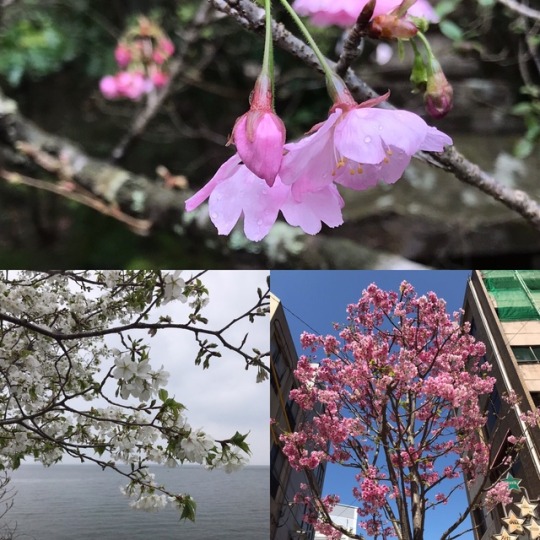
Our first glimpse of the Sakura this year was in Kagoshima on the Southern island of Kyushu. Pink is the usual cherry tree colour so the white against the moody greys of the sea and sky were an attractive contrast. The rain drops on the fleeting blossoms are a truly ephemeral moment of nature.
This highly managed `natural phenomenom` attracts many international visitors. This year we hosted two sets. The first arrivals were Susannah and Alvin, a little premature for the Nagoya and more centrally located blossoms, so we headed to Kyoto to check out the historical sights.
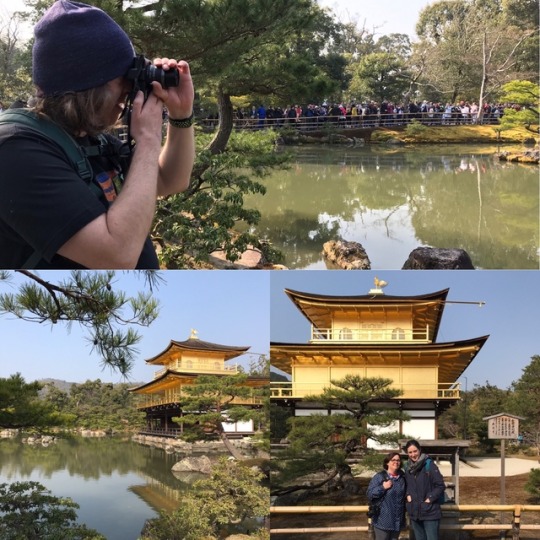
The first stop of the day on this version of `Tamsin’s Kyoto Tour` was the world famous Kinkakuji or Golden Temple. This tourist site is always packed and we joined the extensive queue to enter early before it was even open. Once inside we dutifully took our pictures walked the trails around the `tranquil` location and indulged in green tea and Kinkakuji themed sweets.
The sites history dates back to 1397. The temple narrowly avoided destruction during the Onin war between 1467-1477 when all the surrounding buildings were destroyed by fire. However after surviving for over 500 years including through the bombings of world war 2, that claimed a lot of Japan’s historical monuments, Kinkakuji finally succumbed when a `crazed` novice monk decided to burn it to the ground in 1950.

Ginkakuji was the next stop on our Kyoto tour. The Silver Temple is located across the other side of the city and marks the beginning of the Philosophers Path. The temple buildings perch in front of the mossy hillside garden, whose paths meander through the towering pines. At different viewpoints from above the cityscape of Kyoto, ponds, gravelled zen gardens and the somewhat dowdy Pavilion appear in the foreground.
Ginkakuji was built by the grandson of the Shogun Ashikaga Yoshimitsu who was responsible for the construction of Kinkakuji. It was supposed to be covered in silver leaf when finished, hence the name, but by the time of its owners death, it was still unfinished so was purposefully left incomplete. This was in keeping with the Wasi-Sabi artisitic movement that is centred on transcience and imperfection.
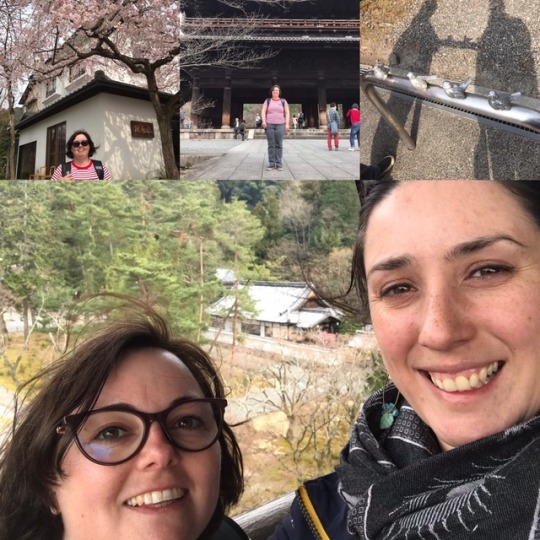
We did manage to find the odd early blossoming tree but most buds were tightly closed. Our final stop on the rather lengthy trail was Nanzenji. The most impressive part of the temple complex was the massive Sanmon entrance gate. The gate was apparently built in 1628 to honour the Tokugawa clan soldiers who died in the siege of Osaka Castle in 1615. The vistas across the grounds and Kyoto were very impressive (and a great spot for a quick selfie.)
It was great to extend the tour itinerary to include the Philosopher’s Path; however, it can take time away from other potential landmarks. The feedback from the Tamsin’s tour participants was it was a bit far and not enough places to sit down!
A few days after the Kyoto trip we were joined by other Trowbridge travellers - my parents. Finally the blossom was starting to appear en mass so we headed to Tsurama Park in Nagoya to get involved with the blue tarp action of a hanami party beneath the trees.
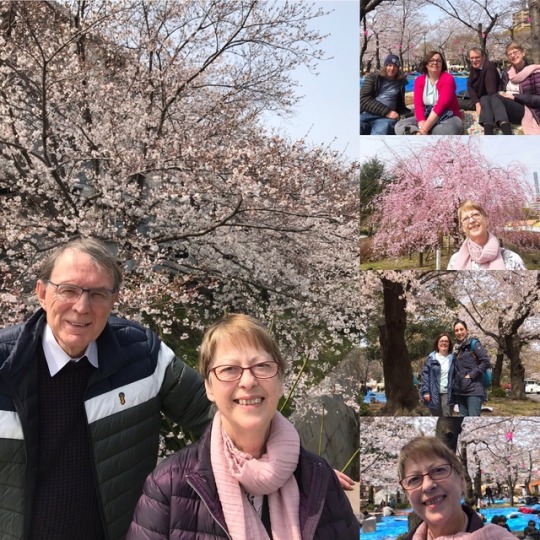
Mum was ready in her matching pink attire to get the perfect Sakura photos. The sun shone and we ate some lovely cheese tartlets and drank hot canned tea and coffee. Making the most of the somewhat unpredictable March weather. We then headed for another well known Nagoya Cherry Blossom spot - Yamazaki River. Again, it was not quite full bloom yet but this meant it was not too crowded and we could enjoy the peaceful one kilometre stroll along the river.
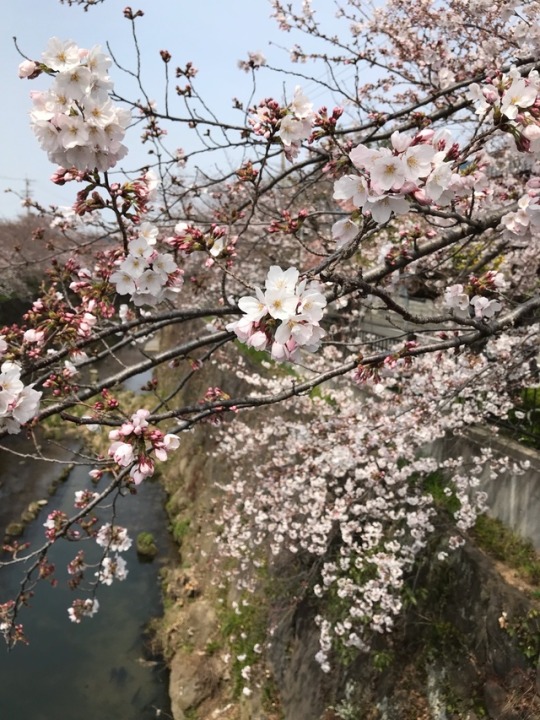
The next day was miserably rainy. As it was Saturday, Rob joined our group and we headed up to 31st floor of Mum and Dad’s hotel for a picturesque breakfast.
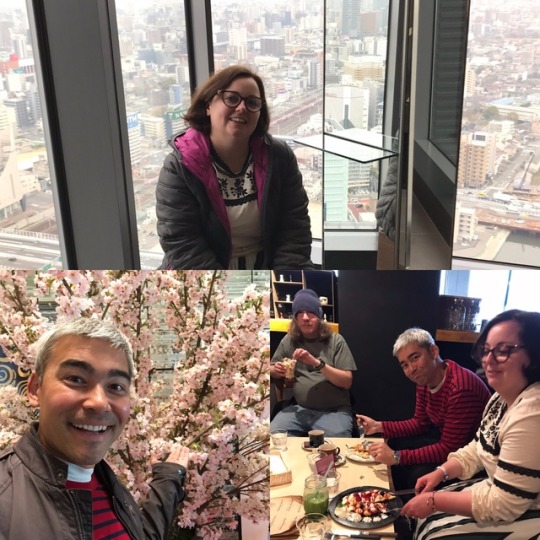
This pic of Susannah is taken in what has to be the most scenic ladies toilet ever. Having missed the hanami party the previous day, Rob was keen to get in on the Sakura photos (this one is courtesy of the fake display in the hotel lobby).
After a wander around Osu kannon, we found the Puffle and waffy cafe for an afternoon snack. At this point the group split to accommodate varying tastes. Rob took Alvin Record store shopping and on a Kirin tasting session. Meanwhile, the rest of us headed top the Tokagawa Museum. The blossom outside the museum was in glorious full bloom. This was marred somewhat by the continuous rain. We spent some time taking pics then mooched around looking at the museum’s collection.
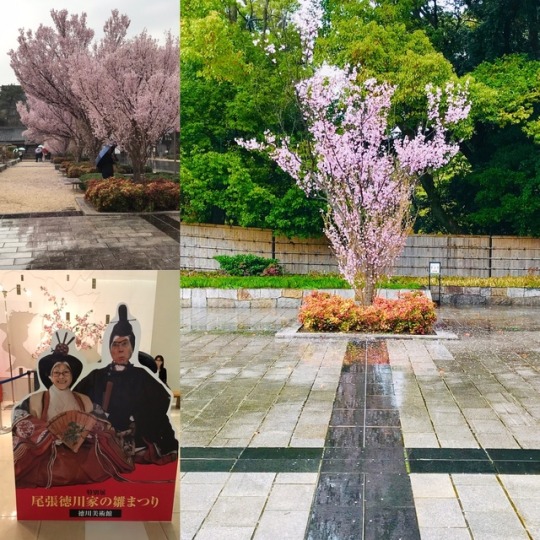
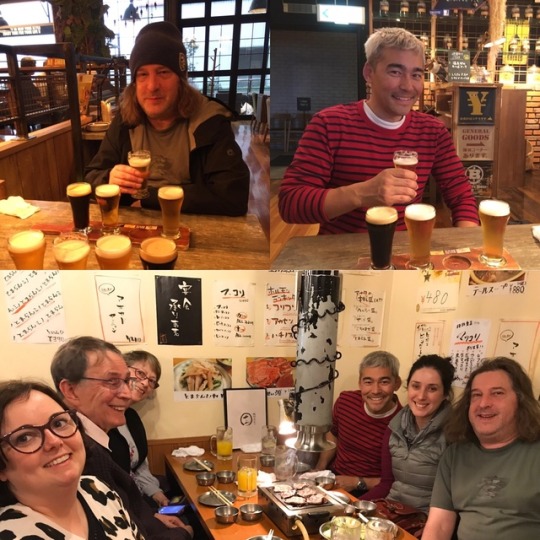
In the evening we decided to indulge our inner carnivores and to bbq some meat at a yakiniku restaurant.
The following day was Alvin and Susannah’s last. We got a quick trip in to the Shinkansen museum. It’s a great interactive space with so much information. Mum was pleased as she got to see Mount Fuji from the window of a bullet train (kind of), and there are lots of amazing displays and exhibits, but I personally loved the fact that the toilets were styled like a shinkansen’s; small things...

#hanami#sakura#kyoto#kinkakuji#ginkakuji#philosopherspath#tsurama park#yamazaki river#kirin#tokagawa#yakiniku#shinkansen#花見#桜#京都#金閣寺#銀閣寺#鶴間公園#哲学の道#山崎川#キリンビール#徳川家#焼き肉#新幹線
2 notes
·
View notes
Photo









We spent our remaining daylight shopping in Sakae and Osu-Kannon, where one can find such delights as the Pokemon Center, Animate, Jungle, and Mandarake. Both are large general shopping districts and Osu-Kannon has several covered arcades and the occasional Buddhist temple.
9 notes
·
View notes
Photo

Osu Kannon Temple, Nagoya
4 notes
·
View notes
Text
2017 Summer in Asia, Part 8: Fukui, Nagoya, and Katsuyama, Japan
July 9, 2017 4:45 pm On the train from Katsuyama to Fukui
I’m going to try to write a post on Fukui, Nagoya, and Katsuyama all rolled into one, so that I’m hopefully caught up and can post online to my travel blog before we leave for Fujisan and Tokyo. [I write, three years later, from my apartment in Boston lol]
We got into Fukui Friday evening, and aside from a trip to the grocery store, we spent the night inside. The next day, some of @taketheshield‘s friends wanted to throw a goodbye party for him, so we went to karaoke near Fukui Station. Sirena recommended I try Calpis, a popular fermented yogurt soft drink. It was surprisingly tasty, and I had several cups. Rachel brought us all these pancakes in the shape of fish, filled with vanilla custard. I can’t remember what they were called [taiyaki], but they were good, and I’ve seen them being made in Fukui and Nagoya since. We sang to several Disney songs, including “How Far I’ll Go,” “I’ll Make a Man Out of You” (my request, and “Poor, Unfortunate Souls” (@taketheshield‘s request), as well as some classic 90′s pop, trashy 2000′s pop, punk songs like Blink-182′s “Miss You” and Greenday’s “Boulevard of Broken Dreams.” There was some Japanese music by One Ok Crock and another group I didn’t catch the name of, and Evanescence’s “Call Me When You’re Sober.” Ash and I discovered we both like Ed Sheeran, so we sang, “Shape of You,” “I See Fire,” and “Afire Love,” which made my night. @taketheshield and I then walked back along the river and rice paddies to his apartment.
The next morning, we got up early to catch the 8 am bus to Nagoya. Our first stop in the city was the Toyota Commemorative Museum of Industry and Technology. It was flippin’ awesome. First, we walked through the early history of Toyota as Toyoda Looms, watching demonstrations of manual and automatic looms churning out impressive fabrics. Then, we saw a metalworking demonstration of a bullet-shaped piece of metal being heated red and crushed into a disk. Finally, we got to where Toyoda’s son began researching American automobiles to create the first Toyota car. There were detailed exhibits on how each part of a car works both separately and together, from the engine to the clutch to the axles. Then, on the floor below, there was an exhibit on how cars are built and then taken apart for repairs. Machines disassembled, reassembled, and painted repeatedly before my eyes, as I filled my phone with videos. Then, there was a line of completed Toyota models from the first car and truck through the classic sports models and into the present day, ending with a hilariously-dramatic manga about the invention of the Prius.
Outside, after buying Dan a gift at the gift shop, I got to see a robot play two songs on the violin. It made me want to pick up my own violin again. From the museum, I took the metro to Osu, a shopping galleria I walked through, stopping to buy a mini melon cake and hot dog from a local bakery, on my way to Osu-Kannon, a Buddhist Temple.
The temple was impressive, with its gate and bell tower, but what caught my attention more was the line of Lamborghinis parked within the complex. My first thought was that this had to be some sort of sacrilege, but then, to my surprise, several monks came out and began blessing the cars, as onlookers and drivers bowed their heads in reverence. Japan surprises me in new ways every day.
After witnessing some of the Lambo blessing, I decided to walk the forty minutes back to the station, in order to see a bit more of Nagoya before leaving. The city did not disappoint, with amusingly-exaggerated restaurant posters featuring muscular men with tears streaming down their faces, exclaiming, “Ichiban!” about the food they held, and vending machines selling drinks like “Boss,” which also came in “Black Boss” and “Rainbow Boss” varieties.
I have four minutes before the train reaches Fukui station, and the trains here are notoriously punctual, so I’ll try to be brief. The next day, Monday, I spent doing laundry and resting in Fukui, and today I took this train to Katsuyama to see the famous dinosaur museum, which was delightful. It had tons of fossils and skeletons, and an anime short featuring melodramatic dinosaur paleontologists, an evil meteor that cackled and screamed when it attacked, and animatronic dinosaurs that roared and moved and made me shiver just a little a la Jurassic Park. Here’s my stop!
0 notes
